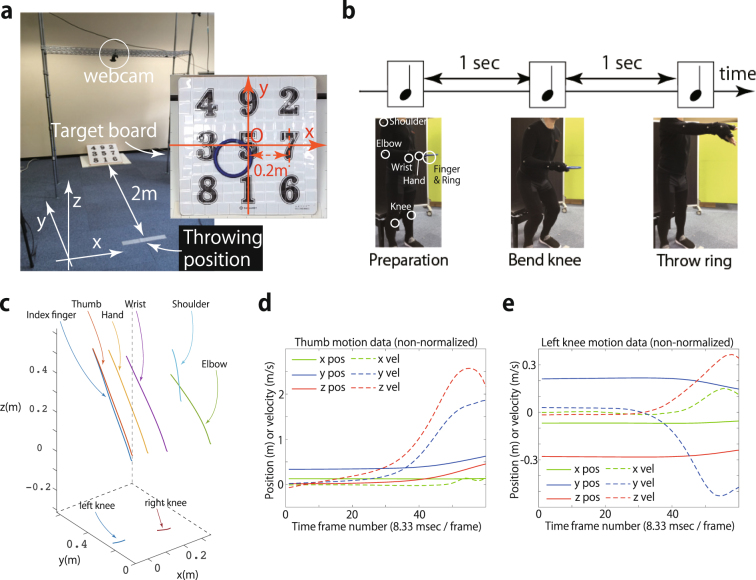Figure 1.
Experimental setting and representative motion data in the ring-throwing experiment. (a) Experimental setup. A target board was placed two meters from the throwing position. The throwing position was indicated by a white tape. A webcam was set to record the ring position; the x-, y-, and z-coordinates of the motion data were defined as corresponding to the transverse, sagittal, and coronal planes, respectively. Inset: an example of the ring position recorded by the webcam. The x-axis, y-axis, and origin O of the movement performance were defined as indicated in the inset. (b) Subjects threw the ring toward the center of a target board according to beep sounds for which the inter-sound-interval was 1 sec. The first beep represented a preparation signal to indicate the initiation of one trial. The subjects were instructed to bend their knees after they heard the second beep and to throw the ring at the time of the third beep. The use of this method decreased the trial-to-trial variability in the movement time. Motion capture markers were attached to the participants’ thumb, index finger, hand, wrist, elbow, shoulder, left knee, and right knee. The markers are indicated in the figure by white circles. (c) Non-normalized movement trajectory data of a typical subject in the x-, y-, and z-coordinates. The figure indicates the position data averaged across 100 trials. (d,e) Temporal profiles of the non-normalized position and velocity of the markers attached to the thumb and the left knee. The profiles were obtained by averaging the position data across 100 trials.

